- News
- Reviews
- Bikes
- Components
- Bar tape & grips
- Bottom brackets
- Brake & gear cables
- Brake & STI levers
- Brake pads & spares
- Brakes
- Cassettes & freewheels
- Chains
- Chainsets & chainrings
- Derailleurs - front
- Derailleurs - rear
- Forks
- Gear levers & shifters
- Groupsets
- Handlebars & extensions
- Headsets
- Hubs
- Inner tubes
- Pedals
- Quick releases & skewers
- Saddles
- Seatposts
- Stems
- Wheels
- Tyres
- Tubeless valves
- Accessories
- Accessories - misc
- Computer mounts
- Bags
- Bar ends
- Bike bags & cases
- Bottle cages
- Bottles
- Cameras
- Car racks
- Child seats
- Computers
- Glasses
- GPS units
- Helmets
- Lights - front
- Lights - rear
- Lights - sets
- Locks
- Mirrors
- Mudguards
- Racks
- Pumps & CO2 inflators
- Puncture kits
- Reflectives
- Smart watches
- Stands and racks
- Trailers
- Clothing
- Health, fitness and nutrition
- Tools and workshop
- Miscellaneous
- Buyers Guides
- Features
- Forum
- Recommends
- Podcast
review
£1,999.00
VERDICT:
A fast and agile aero road bike with features that really do add comfort to the ride
Weight:
8,370g
Contact:
At road.cc every product is thoroughly tested for as long as it takes to get a proper insight into how well it works. Our reviewers are experienced cyclists that we trust to be objective. While we strive to ensure that opinions expressed are backed up by facts, reviews are by their nature an informed opinion, not a definitive verdict. We don't intentionally try to break anything (except locks) but we do try to look for weak points in any design. The overall score is not just an average of the other scores: it reflects both a product's function and value – with value determined by how a product compares with items of similar spec, quality, and price.
What the road.cc scores meanGood scores are more common than bad, because fortunately good products are more common than bad.
- Exceptional
- Excellent
- Very Good
- Good
- Quite good
- Average
- Not so good
- Poor
- Bad
- Appalling
The Merida Reacto 5000 is an aero road bike that combines plenty of speed with agile handling and a respectable amount of comfort. If you have £2,000 to spend on a race bike, you need to pay attention!
So it's quick?
In a word, yes. The Reacto 5000 is at its best on flat and rolling roads when you just want to get your head down and do some hard work. Slam it into a big gear, wind up the speed, and you bowl along beautifully.
> Find your nearest dealer here
Merida has included numerous aero features designed to help you cut through the wind. For a start, the Reacto 5000 is built around Merida's Fastback tube profiles which are based on the NACA (National Advisory Committee for Aeronautics) 0028 airfoil.
The tail of the profile is cut square, the idea being to maintain airflow stability without causing turbulence. This also keeps the weight down and allows Merida to keep the tube dimensions within the UCI's limits.
The seatstays join the seat tube lower than normal to reduce the size of the frontal area slightly, and they're positioned wide, well away from the rear wheel, to manage airflow in that area. The legs of Merida's full-carbon fork are widely spaced too, and the crown is integrated into the silhouette of the frame.
I won't list all of the Reacto's aero features here – go to our First Ride on the Merida Reacto Evo Team for more details on those.
The geometry is also set up to help you ride fast. I've been riding the 56cm model which comes with a 575mm top tube. That's unusually long for a bike of this size. The head tube isn't especially short at 184mm, but the stack height (the vertical distance from the centre of the bottom bracket to the top of the head tube) of 578mm and reach (the horizontal distance between those two points) of 398mm put me into a stretched and fairly low riding position. As usual, you can adjust things via headset spacers and/or swapping the stem, but this is a race bike and the geometry has been designed accordingly; you're not going to get a particularly relaxed setup here.
The overall result is a bike that carves through the air just a little bit more easily than a standard road bike. The difference isn't massive, but it is appreciable when you compare your riding speeds with wattage and heart rate.
What's it like on the hills?
Pick up some £2,000 bikes and you're surprised at just how light they are. Weighing in at 8.37kg (18.5lb), our Reacto 5000 isn't really like that. It's a decent weight, especially for an aero bike, but it's not mega-light. That deep-section tubing adds a little to the load compared with a bike that's designed with light weight primarily in mind, and the 35mm deep Fulcrum Racing Quattro aluminium wheels are the better part of 1,800g.
When you hit a small rise you don't even notice that slight weight penalty. If you get out of the saddle, brace yourself against the front end of the bike and fire your quads into action, the bottom bracket holds solidly in place and you're over the crest before you know it.
You might get up steeper stuff a little quicker or easier on a superlight bike. The Reacto 5000 isn't quite as animated on this type of terrain as something a kilo lighter, say, but it's marginal and no single bike is going to be best in every situation. Nine times out of ten, you're going to gain more on the flat from riding this bike than you're going to lose on the hills. Aerodynamics trumps light weight.
Merida specs an FSA Gossamer Pro chainset with 52/36-tooth chainrings to help on the hills. Call it mid-compact, semi-compact or faux pro, this combo, matched up to the 11-28 cassette, means you have gears suitable for pretty much any race situation you're likely to encounter.
Once over the top, the Reacto 5000 proves itself to be highly flickable on the descents. It's not twitchy or jumpy but it is easy to manoeuvre when you want to weave through fast corners.
The rear brake is positioned below the chainstays, how does it behave?
Merida specs Shimano 105 direct mount brakes, meaning that the arms are attached directly to the frame and fork rather than via a central bolt.
The front brake is fixed to the front of the fork rather than hidden away around the back like it is on some aero road bikes. When I spoke to Merida's director of products Juergen Falke about this, he said the difference it makes to the aero performance is minimal.
What's more important, according to Merida, is that the rear brake is tucked away on the underside of the chainstays. This means there's no longer the need for a brake bridge between the seatstays, cleaning up the airflow in that area.
The downside is that on damp days the rear brake can get wetter and grittier than it would if sited in a conventional position. I've heard the noise of something small stuck between the brake pad and the wheel rim more than usual.
The other reason not to position the rear brake down there is that complicated cable routing can often result in a lack of power. I found the rear braking here to be a little more wooden than usual, but chances are you use your front brake far more often anyway. Due to the positioning of the internal routing port, it would probably work better for those who operate the rear brake with their right hand rather than their left.
Aero bikes aren't known for their comfort. What about this one?
Merida has worked hard to make the Reacto comfortable. First, it uses what it calls Bio Fiber Damping Compound. What the Dickens might that be? It means that flax fibres are woven into the carbon of the rear stays, the idea being to damp vibration.
Then there's the carbon S-Flex seatpost. You can see for yourself what's going on here. Merida moulds a massive notch into the aero-profile post, the idea being to allow more movement at the saddle. The elastomer insert doesn't actually affect the performance, it just fills the gap; it's the fact that the seatpost is slimmed down that's important.
The Prologo Kappa 3 saddle has a generous depth of padding and the shell (but not the padding or cover) has a large hole in the centre, which results in a lot of give. I'd actually prefer something a little less soft, but that's down to personal taste.
Like pretty much everyone else, Merida specs 25mm tyres – Continental Grand Sport Races, to be precise. They're good all-purpose road tyres and the width means you can run them at a pressure that'll help smooth over road irregularities.
The result of all this is that the Reacto 5000 feels pretty smooth out on the road. It's by no means as forgiving as some endurance bikes out there, but the features that Merida has included really do add to the comfort and you'll appreciate them more the longer you're in the saddle.
What are the components like?
The Merida Reacto 5000 is fitted with a real mix of components. The headline fact is that you get Shimano Ultegra, but only the shifters and derailleurs. As usual with Ultegra, Shimano's second tier groupset, you get excellent performance at a very good weight.
The Fulcrum Racing Quattro wheels are solid and reliable with 35mm-deep aluminium rims. We've found them to be very stiff in the past, to the point that they can occasionally feel harsh, although the Reacto 5000 easily does enough to keep the ride comfortable.
I'd say the Quattros make good training wheels because they can handle harsh conditions without any fuss, although I'd probably be looking for something a little lighter for racing.
> Check out our guide to the fastest aero road bikes here
The only other components we've not already discussed are Merida's aluminium stem with a carbon faceplate and the FSA Gossamer alloy handlebar. They both do their jobs well enough – no complaints here. Neither is particularly glitzy but I got on really well with the bar's compact drop and ample rearward extension.
Overall
The Merida Reacto 5000 is a very good aero road bike. I'd prefer lighter wheels and better rear braking but there are always compromises. The positives far outweigh the negatives here. This bike is agile, it's comfortable and, above all, it's very quick.
Verdict
A fast and agile aero road bike with features that really do add comfort to the ride
road.cc test report
Make and model: Merida Reacto 5000
Size tested: 57cm
About the bike
State the frame and fork material and method of construction. List the components used to build up the bike.
Frame Reacto CF3 aero carbon frame, Nano matrix and flax fibres. Tapered head tube, internal cable routing, carbon dropouts and integrated seat clamp
Fork Full carbon fork with tapered steerer and direct brake mounting - Pro with double chamber technology
Derailleurs Shimano Ultegra
Shifters Shimano Ultegra
Brakes Shimano 105 - direct mount
Chainset FSA Gossamer Pro 52-36
Bottom bracket FSA Gossamer Pro
Chain KMC X11
Wheels Fulcrum Quattro 35
Tyres Continental Grand Sport Race 25c Kevlar bead
Stem Merida Pro - oversize clamp - carbon face plate - 5 degree
Handlebar FSA Gossamer - oversize clamp - compact drop
Headset B47-4856 bearing neck pro
Seatpost Reacto Race carbon with S-Flex technology (Di2 battery ready)
Saddle Prologo Kappa 3
Tell us what the bike is for, and who it's aimed at. What do the manufacturers say about it? How does that compare to your own feelings about the bike?
It's an aero road bike primarily designed with racing in mind, although it'll suit anyone who wants to ride fast.
Frame and fork
Overall rating for frame and fork
8/10
Tell us about the materials used in the frame and fork?
The frame and fork are carbon fibre, with the stays containing flax fibres that are designed to damp vibration.
Tell us about the geometry of the frame and fork?
It's a race geometry that offers a stretched and fairly low riding position.
How was the bike in terms of height and reach? How did it compare to other bikes of the same stated size?
The reach was longer than usual. I usually take a 57cm or 58cm frame, depending on the brand. I felt that the reach on this 56cm model suited me well.
Riding the bike
Was the bike comfortable to ride? Tell us how you felt about the ride quality.
Yes, the flexibility in the seatpost, 25mm tyres, and perhaps a little give in the back end of the frame help to keep the ride the right side of firm.
Did the bike feel stiff in the right places? Did any part of the bike feel too stiff or too flexible?
It felt stiff through the centre, which is where you really notice any sponginess.
Was there any toe-clip overlap with the front wheel? If so, was it a problem?
None
How would you describe the steering? Was it lively, neutral or unresponsive? It was lively, but not twitchy.
Tell us some more about the handling. How did the bike feel overall? Did it do particular things well or badly?
I found it to be pretty manoeuvrable; easy to change to a new line. It's also comfortable, especially for an aero bike.
Which components had the most effect (good or bad) on the bike's comfort? would you recommend any changes?
As ever, the saddle is a personal thing. I actually found it to have too much give in the centre to the point that it felt a bit like a hammock when I was sitting upright! I'd switch it, but that's just me.
The S-Flex seatpost is designed to offer a little up/down movement and to filter our vibration, and it does. At least, you get a more comfortable ride than with most other aero road bikes.
Which components had the most effect (good or bad) on the bike's stiffness? would you recommend any changes?
The wheels are stiff and so is the BB386Evo chainset. You get the feeling that your effort is being transferred efficiently into drive.
Rate the bike for efficiency of power transfer:
9/10
Rate the bike for acceleration:
7/10
It accelerated well for an aero road bike, but as quickly as a lighter bike like Merida's own Scultura.
Rate the bike for sprinting:
8/10
Rate the bike for high speed stability:
8/10
Rate the bike for cruising speed stability:
8/10
Rate the bike for low speed stability:
8/10
Rate the bike for flat cornering:
8/10
Rate the bike for cornering on descents:
9/10
Rate the bike for climbing:
7/10
It's a decent climber for an aero road bike, but it loses out slightly to a true lightweight.
The drivetrain
Rate the drivetrain for performance:
9/10
Rate the drivetrain for durability:
8/10
Rate the drivetrain for weight:
9/10
Rate the drivetrain for value:
7/10
Wheels and tyres
Rate the wheels and tyres for performance:
8/10
The Fulcrum Racing Quattros are fairly hefty. You might want to keep them for training and race on something lighter.
Rate the wheels and tyres for durability:
8/10
The wheels are strong and are likely to last, if past experience is anything to go by.
Rate the wheels and tyres for weight:
6/10
Neither the wheels nor the tyres are especially light.
Rate the wheels and tyres for comfort:
7/10
Rate the wheels and tyres for value:
7/10
Controls
Rate the controls for performance:
9/10
Rate the controls for weight:
8/10
Rate the controls for comfort:
9/10
Rate the controls for value:
7/10
Your summary
Did you enjoy riding the bike? Yes
Would you consider buying the bike? Yes
Would you recommend the bike to a friend? Yes
Rate the bike overall for performance:
8/10
Rate the bike overall for value:
8/10
Use this box to explain your score
This is a very good bike at a very good price. It's a clear 8.
About the tester
Age: 43
I usually ride: My best bike is:
I've been riding for: Over 20 years I ride: Most days I would class myself as: Expert
I regularly do the following types of riding: commuting, club rides, sportives, general fitness riding
Mat has been in cycling media since 1996, on titles including BikeRadar, Total Bike, Total Mountain Bike, What Mountain Bike and Mountain Biking UK, and he has been editor of 220 Triathlon and Cycling Plus. Mat has been road.cc technical editor for over a decade, testing bikes, fettling the latest kit, and trying out the most up-to-the-minute clothing. He has won his category in Ironman UK 70.3 and finished on the podium in both marathons he has run. Mat is a Cambridge graduate who did a post-grad in magazine journalism, and he is a winner of the Cycling Media Award for Specialist Online Writer. Now over 50, he's riding road and gravel bikes most days for fun and fitness rather than training for competitions.
























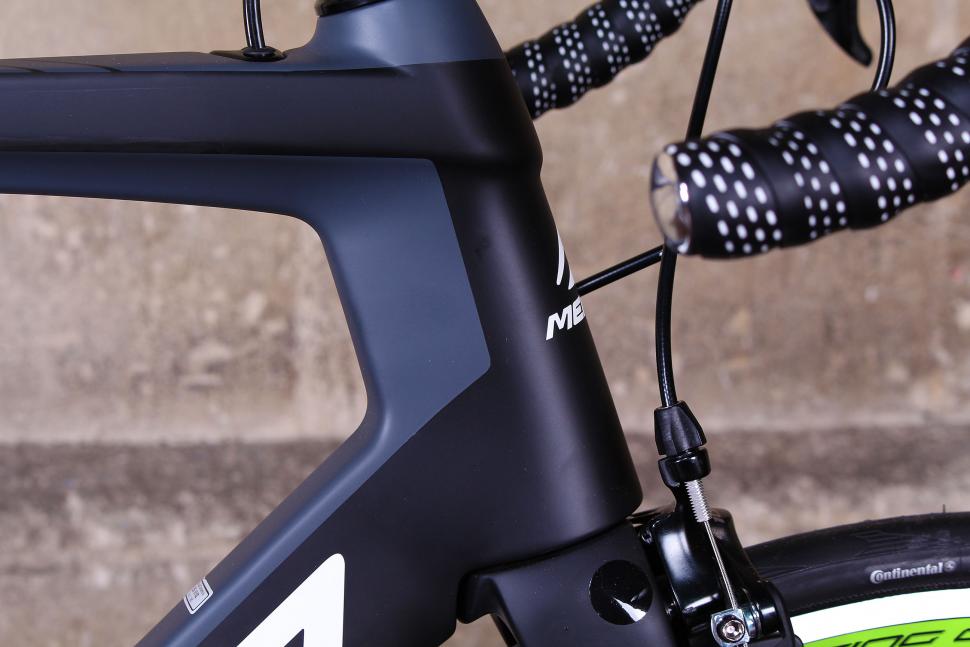

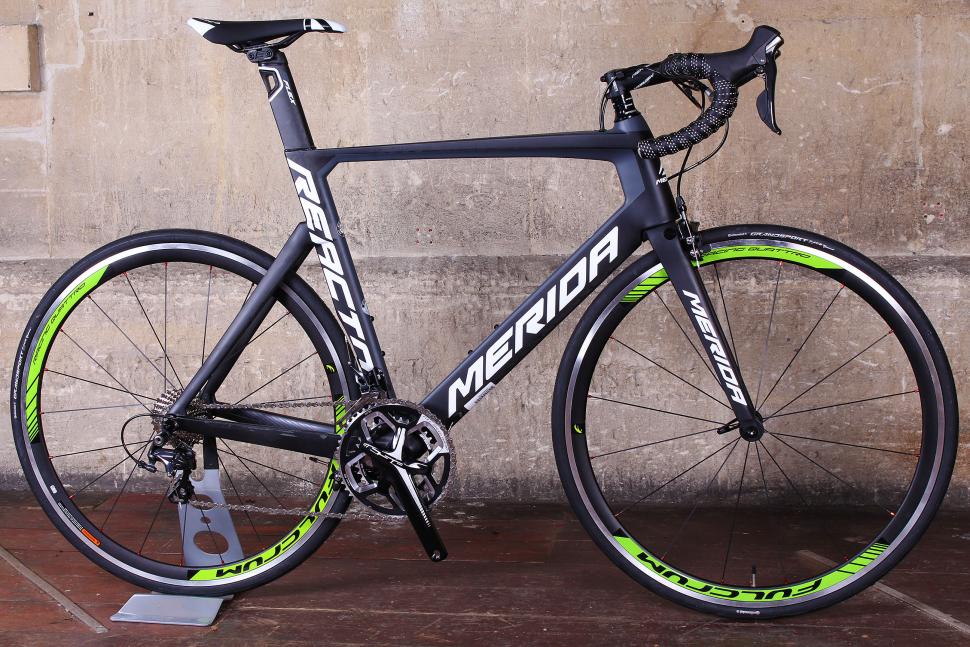

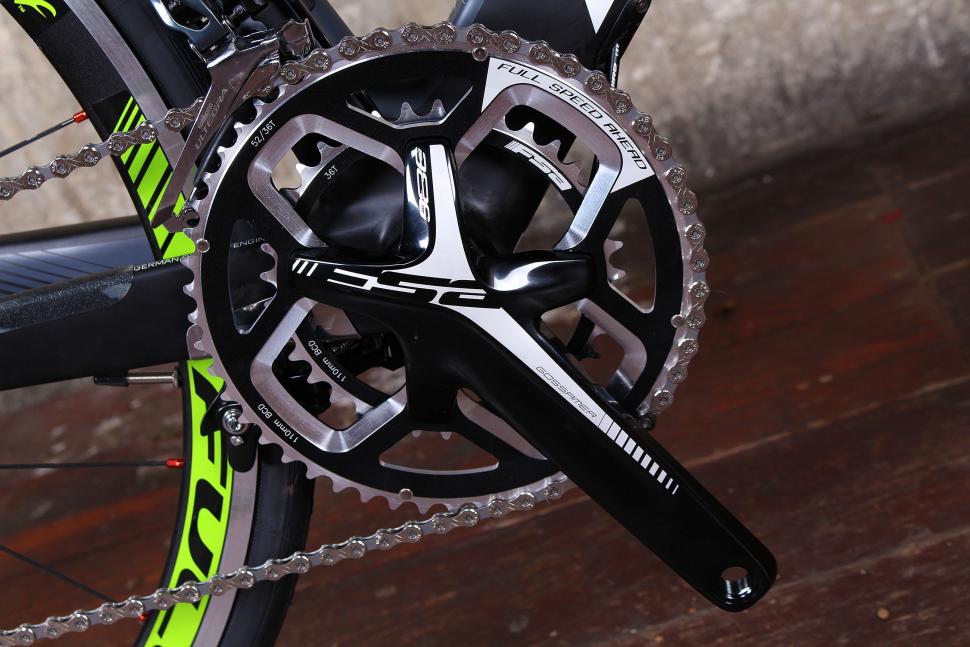
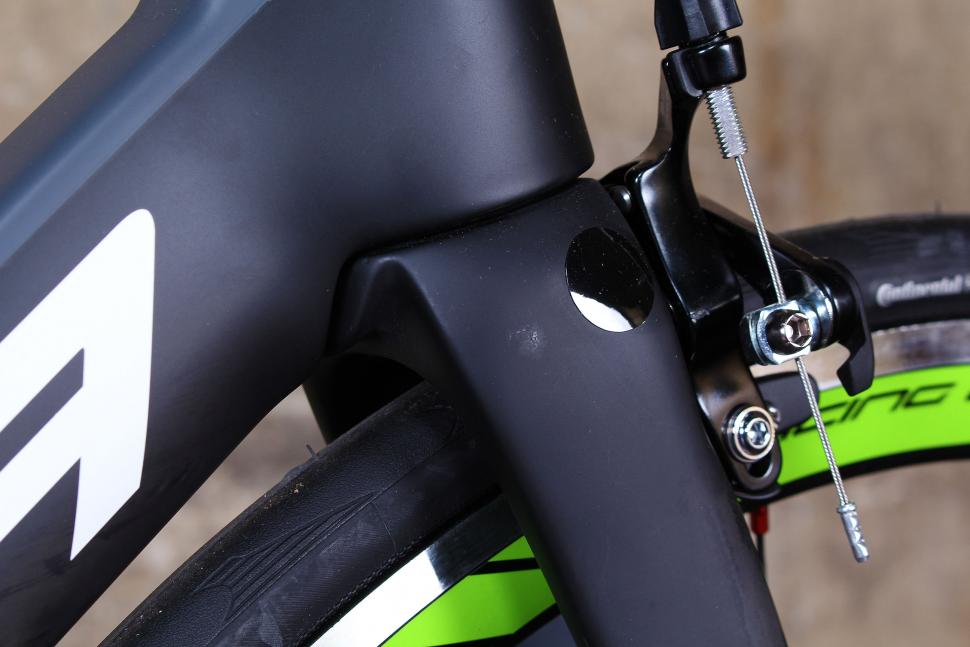
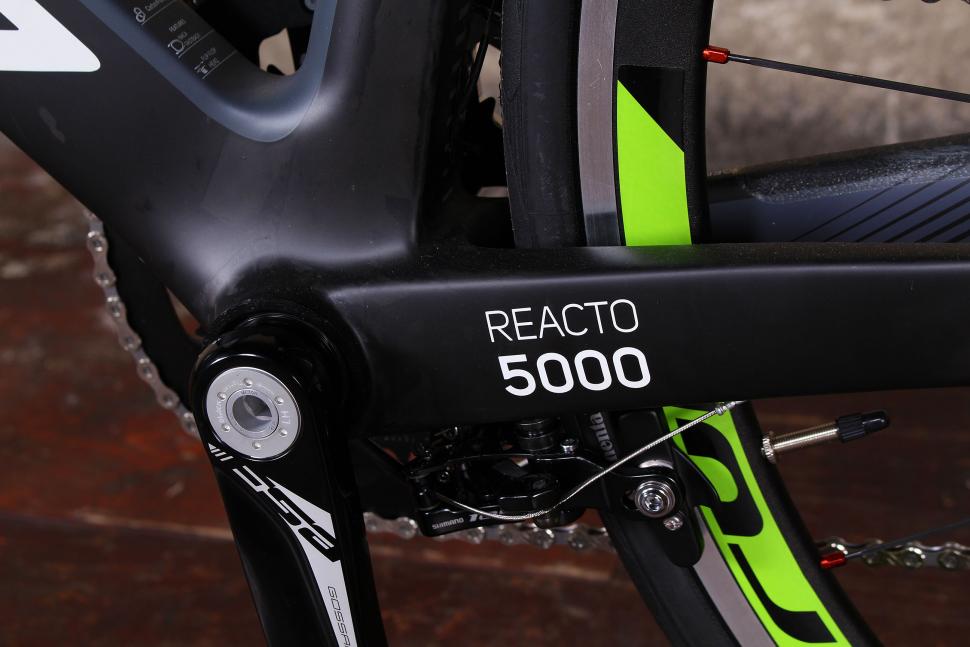



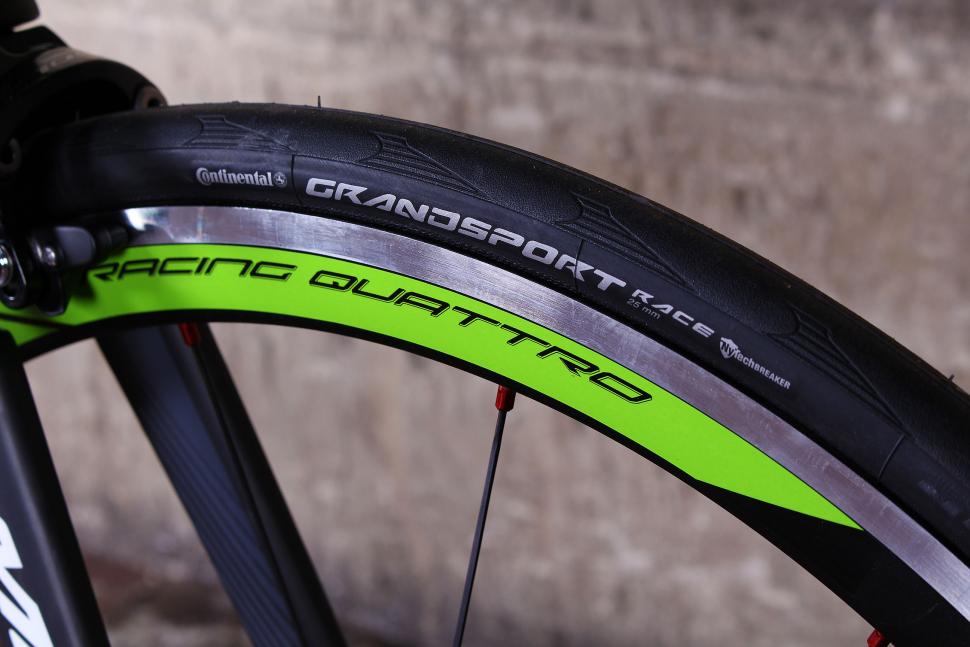
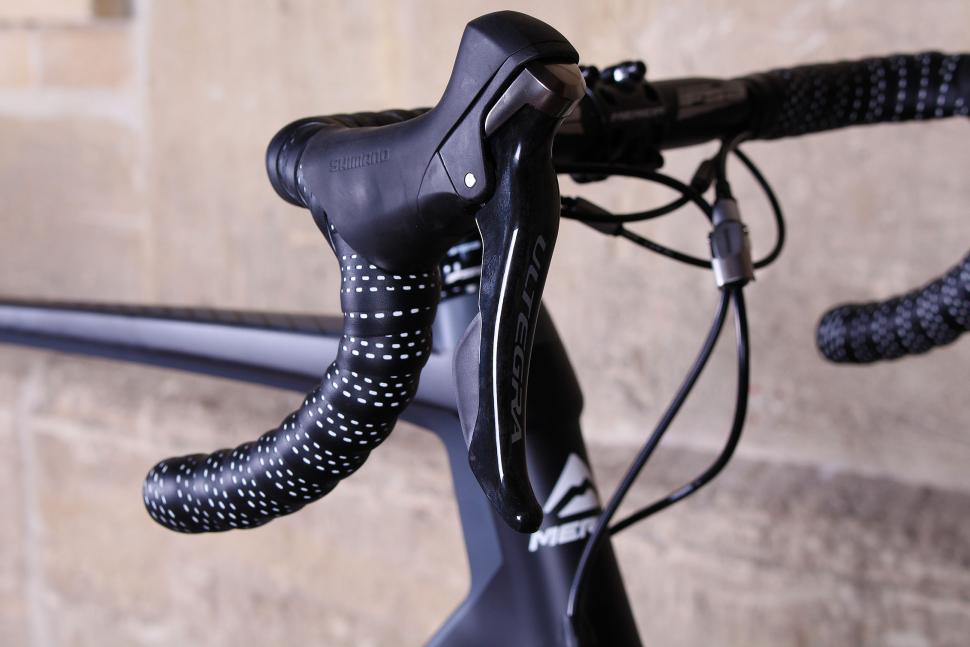

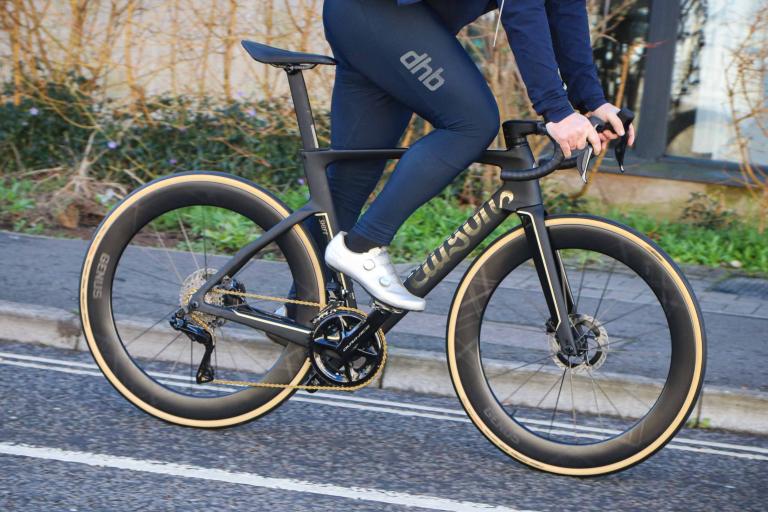
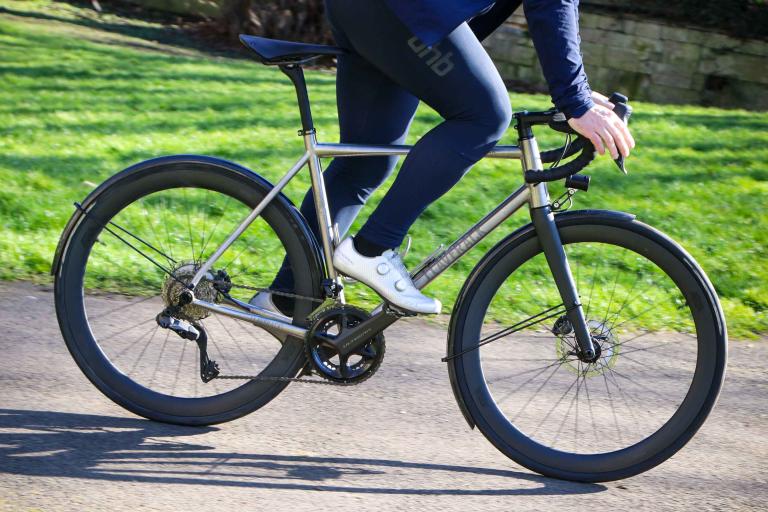


This takes me back. I remember auxetic foam being demonstrated on Tomorrow's World back in the 1980s.
Aha! More predict and provide again!...
It's simply that folding bikes are least likely to be DIY battery jobs, and that the DIY battery jobs are the most likely to catch fire. ...
Geraint Thomas, six appearances including the year he won the Tour. Bradley Wiggins, eight appearances including the year before he won the Tour....
I do indeed.
Helmet cam users ... Next time something like this happens, look at your handle bars and at the vehicle - if you can....
The article states the toerags were youths, so unfortunately there probably won't be any real punishment. But at least the police are appealing for...
Residents awoken by car crashing into Almshouse garden...
I used to work in a bikeshop which sold Litespeed and remember riding one of the earlier versions of the Ghisallo. It was so flexy that when i...
It would help if everyone stuck to the ' keep left, like on the road' rule - it helps our children learn